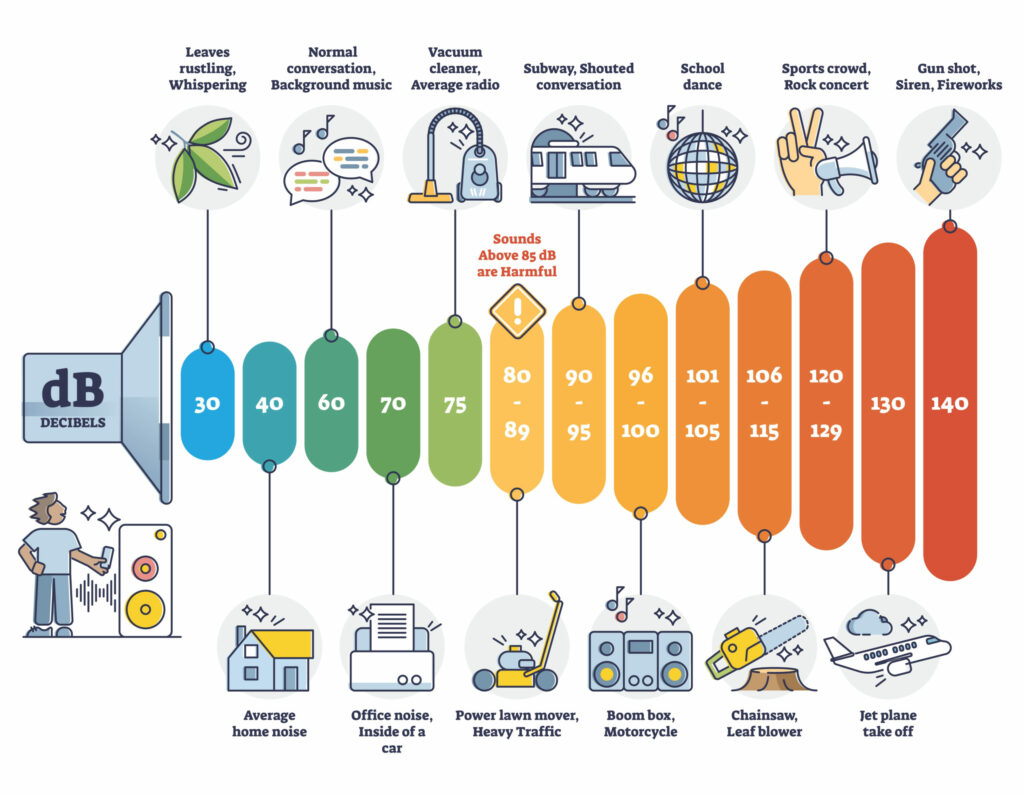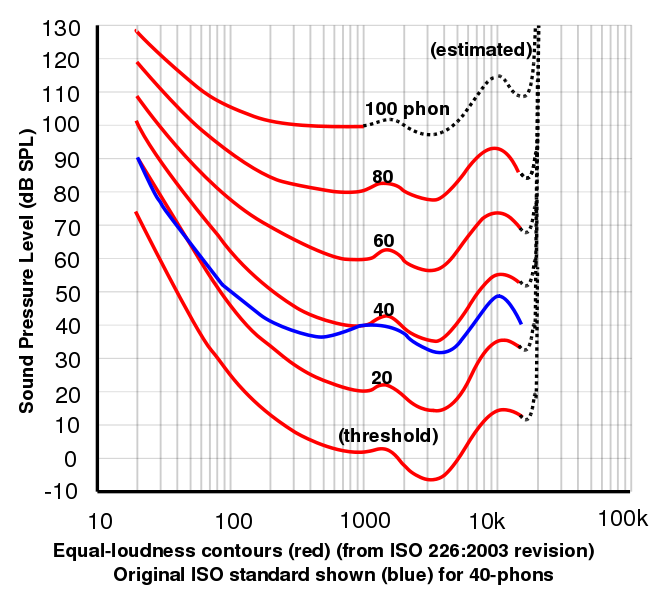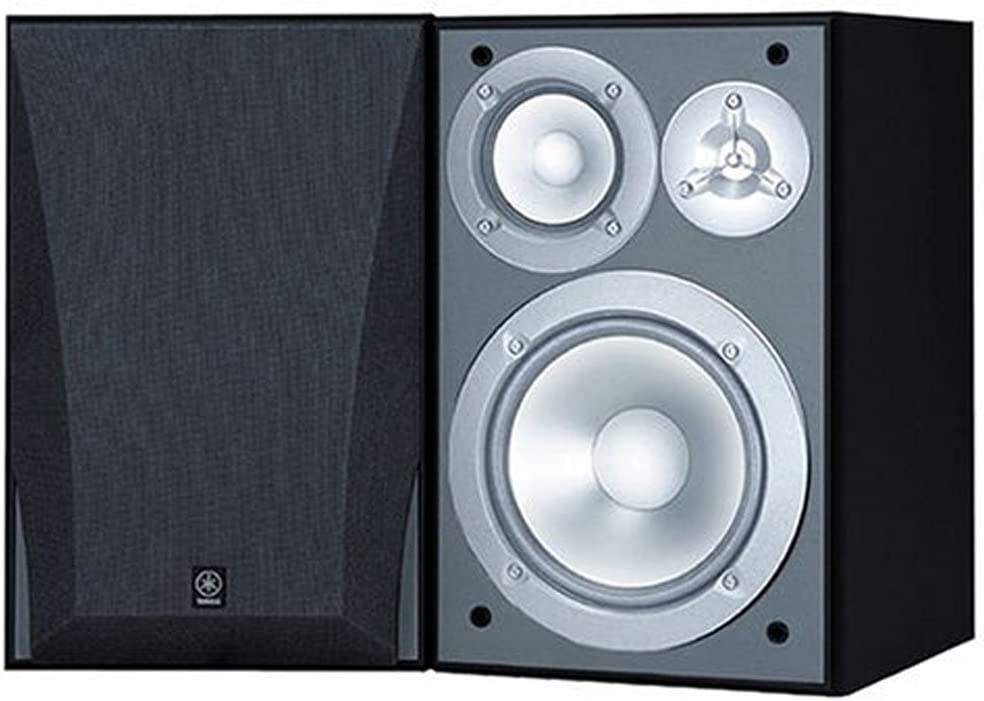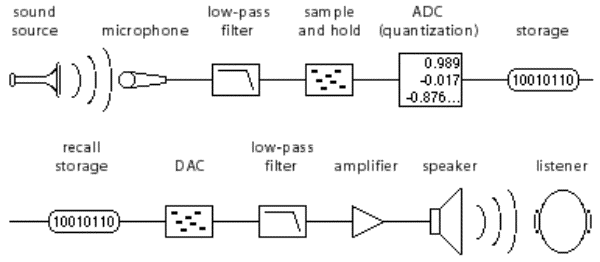Abstract
Why does the same song sound different at home, or in the car, or over ear buds from my phone?
Come along as we look at how sound is converted into electrons, recorded onto media, manipulated, and finally spit out to our ears. What we take for granted when listening to music, is really a wonder of complexity, but moves our ears to joy.
This is a continuation of the Recorded Sound Talk
Understanding Sound Properties
In this section we are going to look at some properties of sound. These will allow us to understand some of the techniques used to hear better sound.
Octaves
Before we go further with our understanding of sound, lets take a detour to understand a common definition of sound ranges using a piano.
The piano is made up of a range of notes divided into Octaves.

This division into Octaves gives us an easy handle to discuss a range of frequencies. The middle octave on the piano is from 216 Hz to 493 Hz. We can look at this Frequency Chart to see the frequency ranges typical for many instruments, as well as the human voice.
You will notice that the middle C is red, this is the fourth octave on the piano. The next A above middle C is the note used by the orchestra to tune against.
Notes and Harmonics
When an instrument plays a note it produces not only the note but also harmonics. These harmonics are what differentiate the same note on one instrument from another instrument. The intensity of the harmonics give a richness to sound that we hear.
Lets look at a video that discusses this difference and a way to measure these frequencies in real time.
Analyzing and Measuring Sound
Lets discuss how we measure sound. Measurement is the engineering method of quantifying sound. Later we will discuss how we hear sound which involve somewhat let scientific means.
Sound Loudness
The measurement of sound volume is done in Decibels. But what is a decibel? Lets find out.
Relation between sounds and loudness
Lets look at a chart to understand how loud common sound sources are.

Power vs Loudness
Since we are talking about sound loudness, it is necessary to understand the relationship between volume and power.
Volume in sound is measured in decibels, as we have seen above. Amplifier power is usually measured in watts. So how does the loudness of a sound relate to the amount of power it takes produce it.
Fact 1: Doubling the Wattage of an amp does not double the volume
To understand this you will need to know a little about Decibels (dB). To keep things simple, I’m just going to cover some basic points:
Decibels are not linear. The change from +1 to +2dB is much, much less than the change from +9 to +10dB
An increase of 1dB is barely noticeable.
An increase of 3dB is noticeable, but not too much. I usually think of it as about the same as a couple of clicks of the volume on your TV remote.
An increase of 10db is huge. It will sound like the volume has doubled or more. Here is a table to show the relationship between Decibels, Voltage, Power, and Loudness.
| dB Change | Voltage | Power | Loudness |
|---|---|---|---|
| 3 | 1.4X | 2X | 1.23X |
| 6 | 2.0 | 4.0 | 1.52 |
| 10 | 3.16 | 10 | 2 |
| 20 | 10 | 100 | 4 |
| 40 | 100 | 10,000 | 16 |
Spectrum Analysis
One method of analyzing music is to break it down into it component frequencies. We can observe these frequencies by using a device known as a Spectrum or Frequency Analyzer. Here is a demo of a spectrum analyzer in use.
How do we hear
Before we discuss how to hear our music better, we need to understand how we hear. Now it might seem that all we need to do is reproduce the music exactly as it was produced in the first place.
Exact reproduction is true when we are only interested in hearing a piece of music as it was recorded in a live performance. But many pieces of music today are processed to create a more pleasing sound. That is why an album that we listen to at home often sounds better than a live performance.
With today’s modern recording equipment and digital audio workstations the sound is better than we would get in a live performance. This happens for several reasons.
A recording places you in the ideal seat to hear the performance. If you were the only person in a concert, your chair could be placed to hear all the instruments optimally. The sound sources could be arranged to give you the best sound.
The second reason for changing the sound you hear is the artist wants a sound that is not original. The artist might want reverb or some other distortion added. A singer might want to sing multiple parts, so they can layer their own voice over and over.
Some recordings are made up of multiple sound sources. The art of sampling to combine sound clips is a growing field.
Psychoacoustics
Psychoacoustics sounds like an abstract scientific concept, but it comes into play whenever you listen to music.
Listening to a track seems simple enough, but the way you experience your own songs and mixes is far from objective.
The systems in your brain and sensory organs that turn vibrating air patterns into music are full of strange quirks. Psychoacoustics: How Your Brain Affects Your Mix
It is not always necessary to understand this level of how we hear, but it can be useful when we look at what we listen to.
Human ear frequency response
We like to think that our hearing responds to all frequencies the same. Unfortunately that is not true. Here is a chart showing how our ears respond to difference frequencies.

Principles of Speakers
Lets look at a 3 way speaker from Yamaha so we can discuss the specs.

This is a book case speaker with some good specs. Now lets look at the NS-6490 Specs
For those of you with more curiosity about speakers, I recommend a site I came across from Jensen called Comparing Frequency Response Charts with lot detailed information and samples of sound and their speakers. I found it a gold mine on speakers.
Room Acoustics
Unless we are listening to music in the middle of a large field, we need to understand room acoustics.
Why equalize your room
You have spent a lot of money for your home theater system and have purchased excellent components. You have had them installed in your home theater room, yet you feel you don’t have the sound quality that you expected. Why? In all likelihood the problem is the room itself. Like fingerprints, each room is different. No two rooms are alike and each has it’s own characteristics.
There are reflections caused by sound bouncing off of walls, ceilings, and floors. There are doors and windows, which act as reflectors, and furniture that will absorb and reflect sound. All of these effects color the sound. A good example of room problems is the feedback effect that we have all experienced in a listening hall when the microphone was being set up. You heard the whistling of the room resonating before the microphone was turned down. The same effect occurs in your listening room.
What you want to do is to listen to the movies and have them sound to you the way the maker of the movie intended. Why equalize your system?
Equalization
One tool for modifying the sound in your space is the equalizer. Here is a tutorial on what an equalizer is and how it works.
Room Equalization
I came across this tool to help you equalize your room. There are automatic equalizers that are used in theaters such as the DEQ2496 by Behringer. But if you are not interested in spending $1000 to tune out the harmonics of your room, you should try the REW (Room Equalizer Wizard).
Reproducing Sound
So we have finally arrived back at listening to sound. If you look at the graphic from the first part of this talk you will see that we have covered the topics.

So in the end, the sound we hear is affected by:
The quality of the D2A (Digital to Analogue) converter.
The quality and equalization of the amplifier.
The acoustics of the room we are in.
The speakers/headphones/ear buds we listen through.
Written by John F. Moore
Last Revised: Thu 10 Nov 2022 07:22:53 PM EST

This work is licensed under a Creative Commons Attribution-NonCommercial-ShareAlike 3.0 Unported License.
